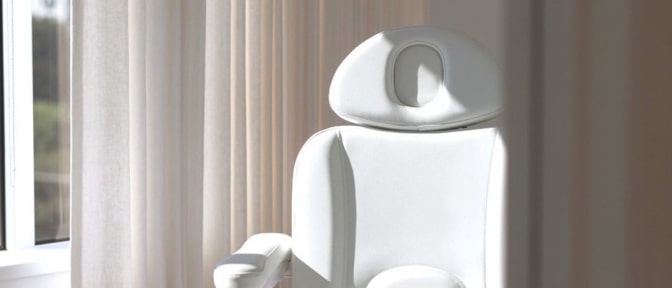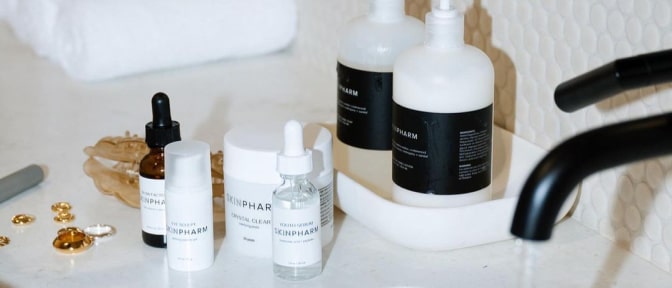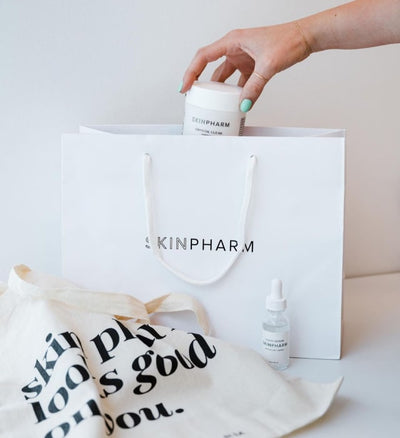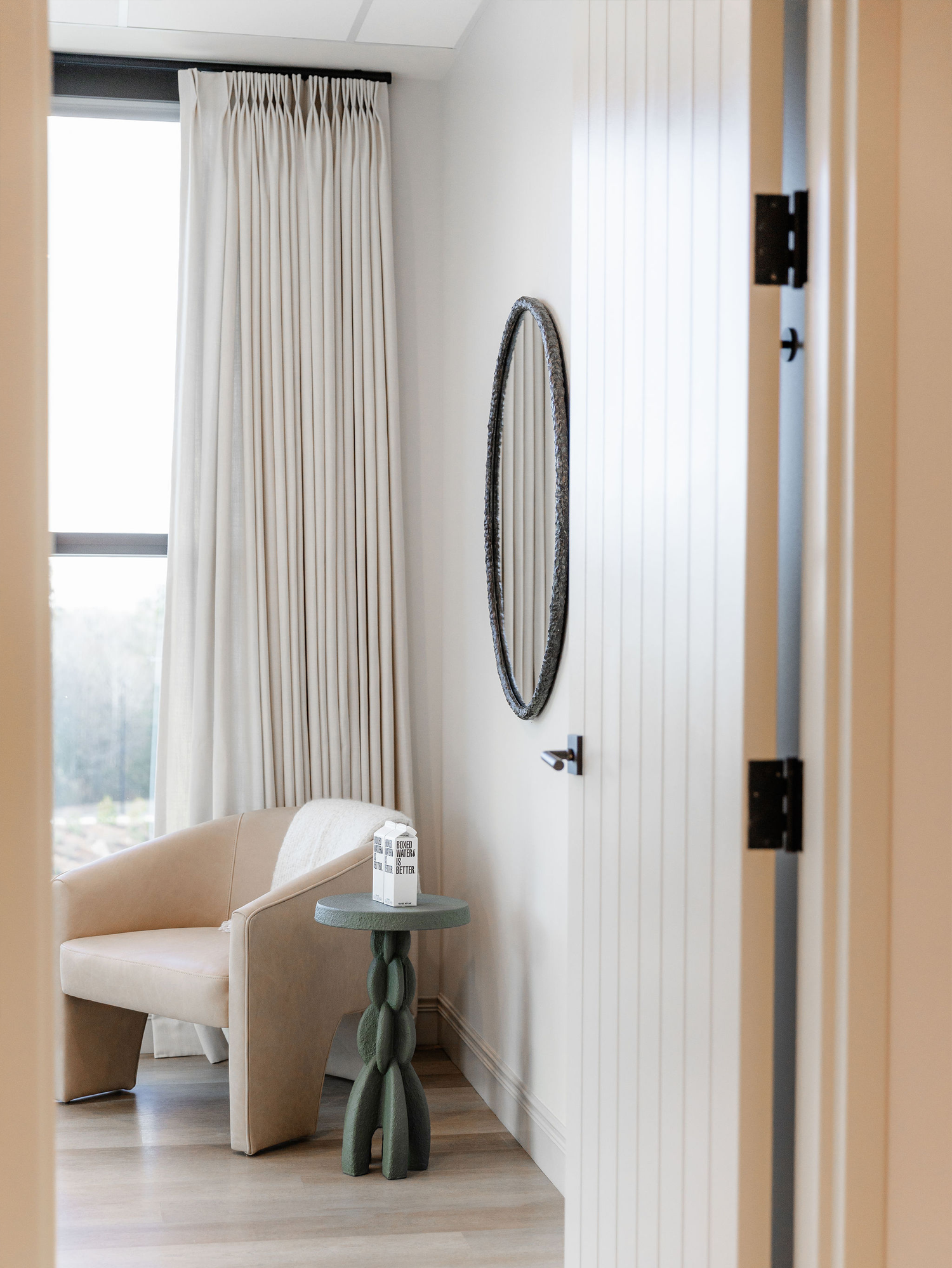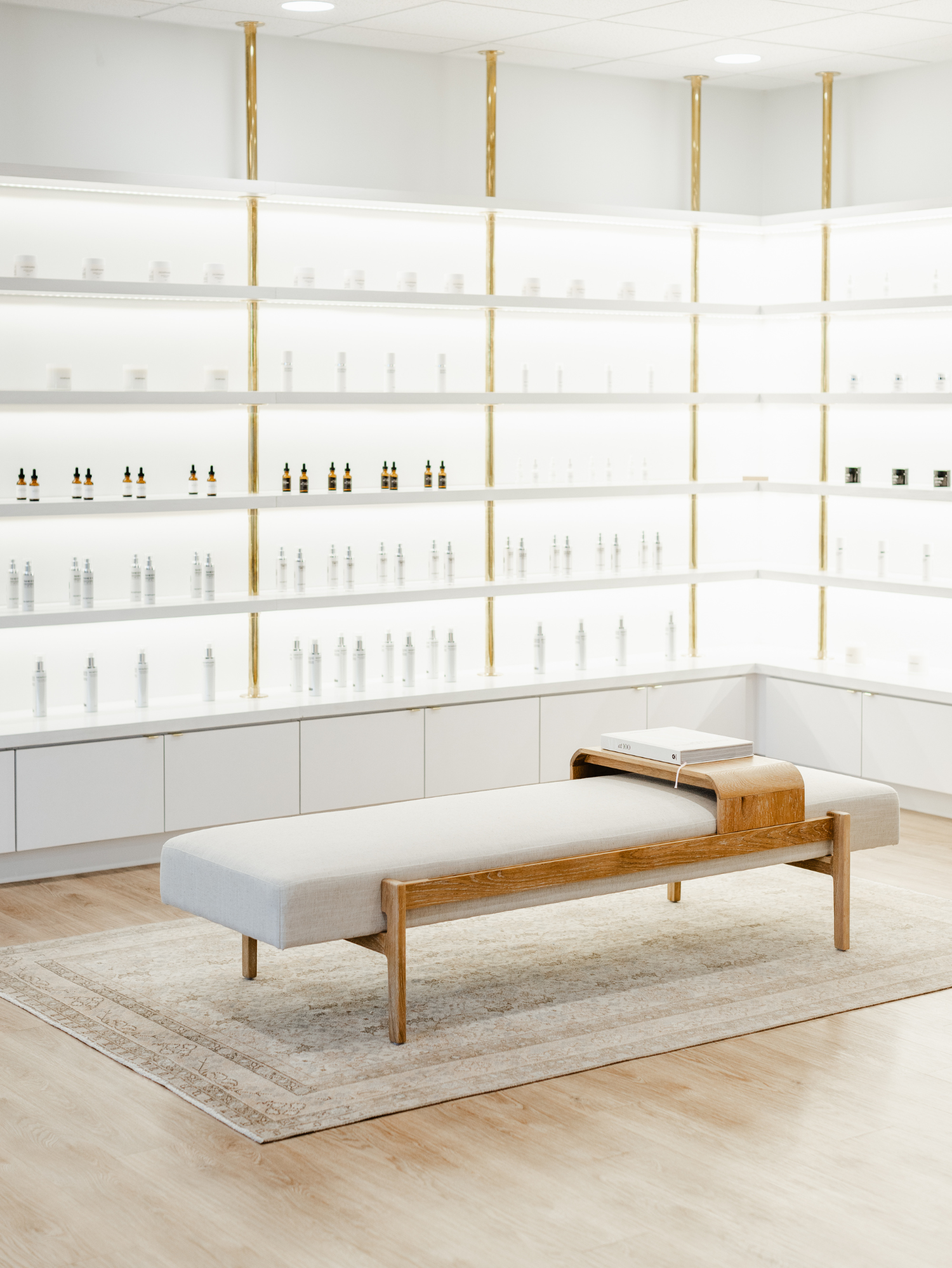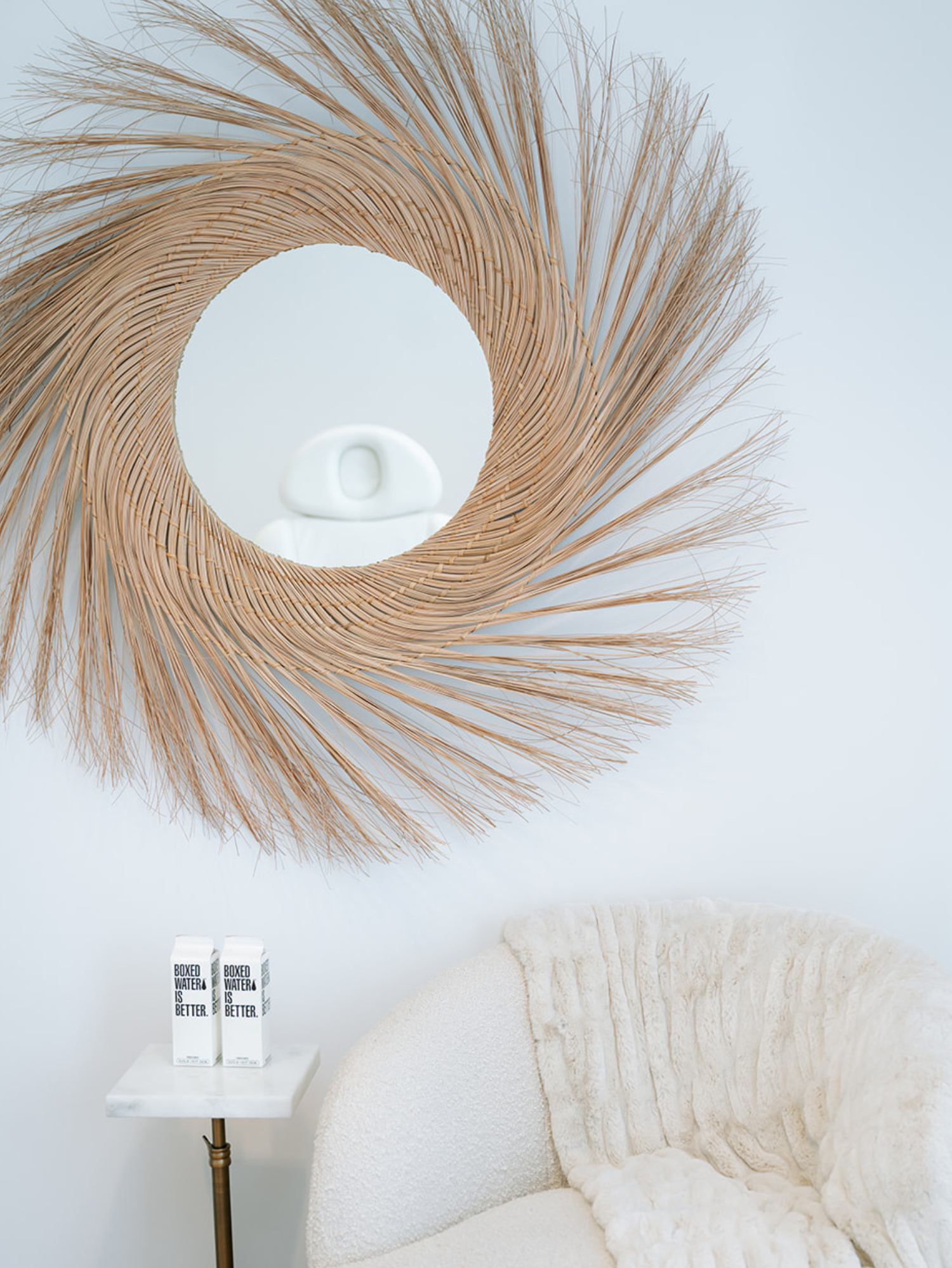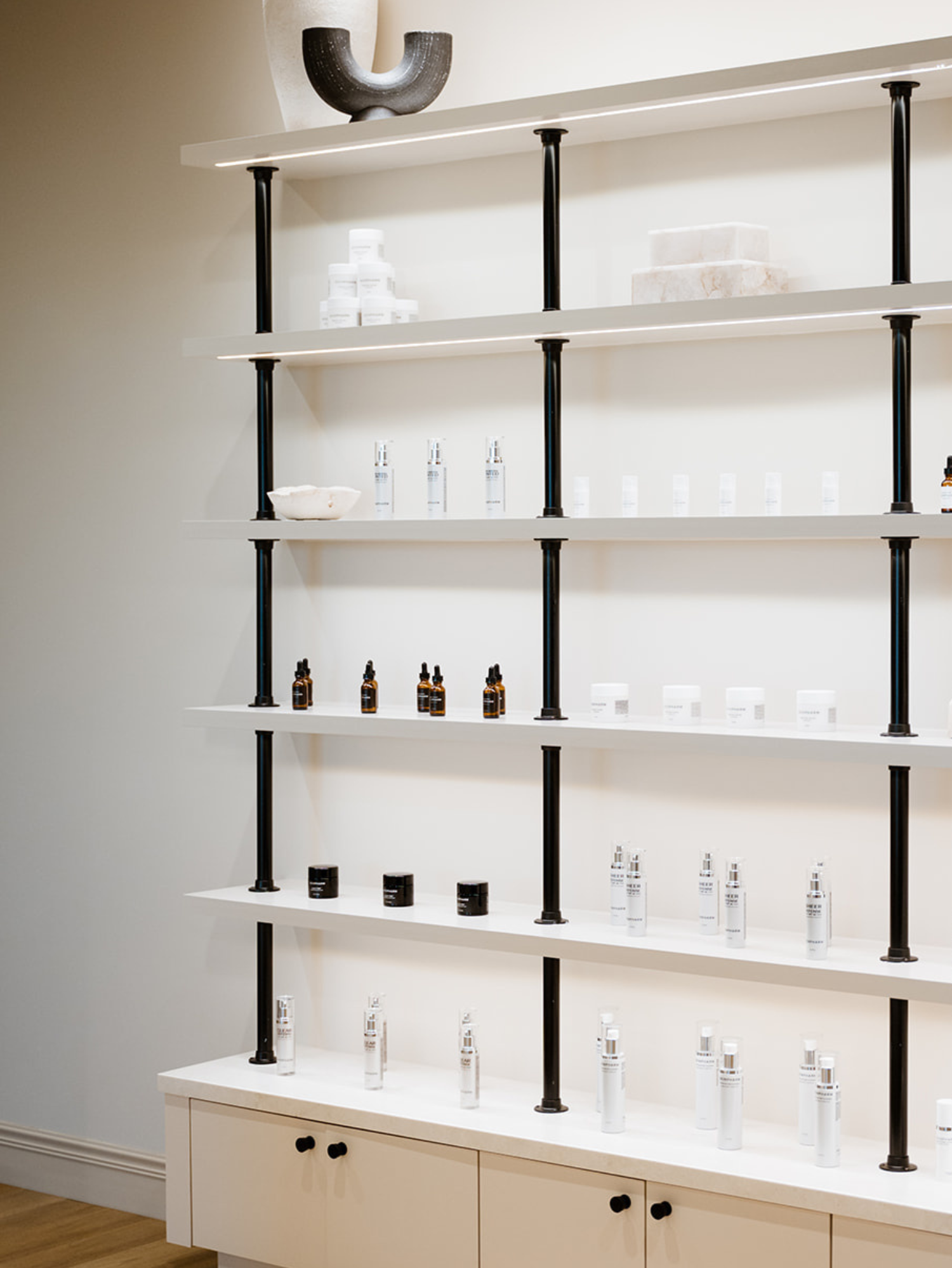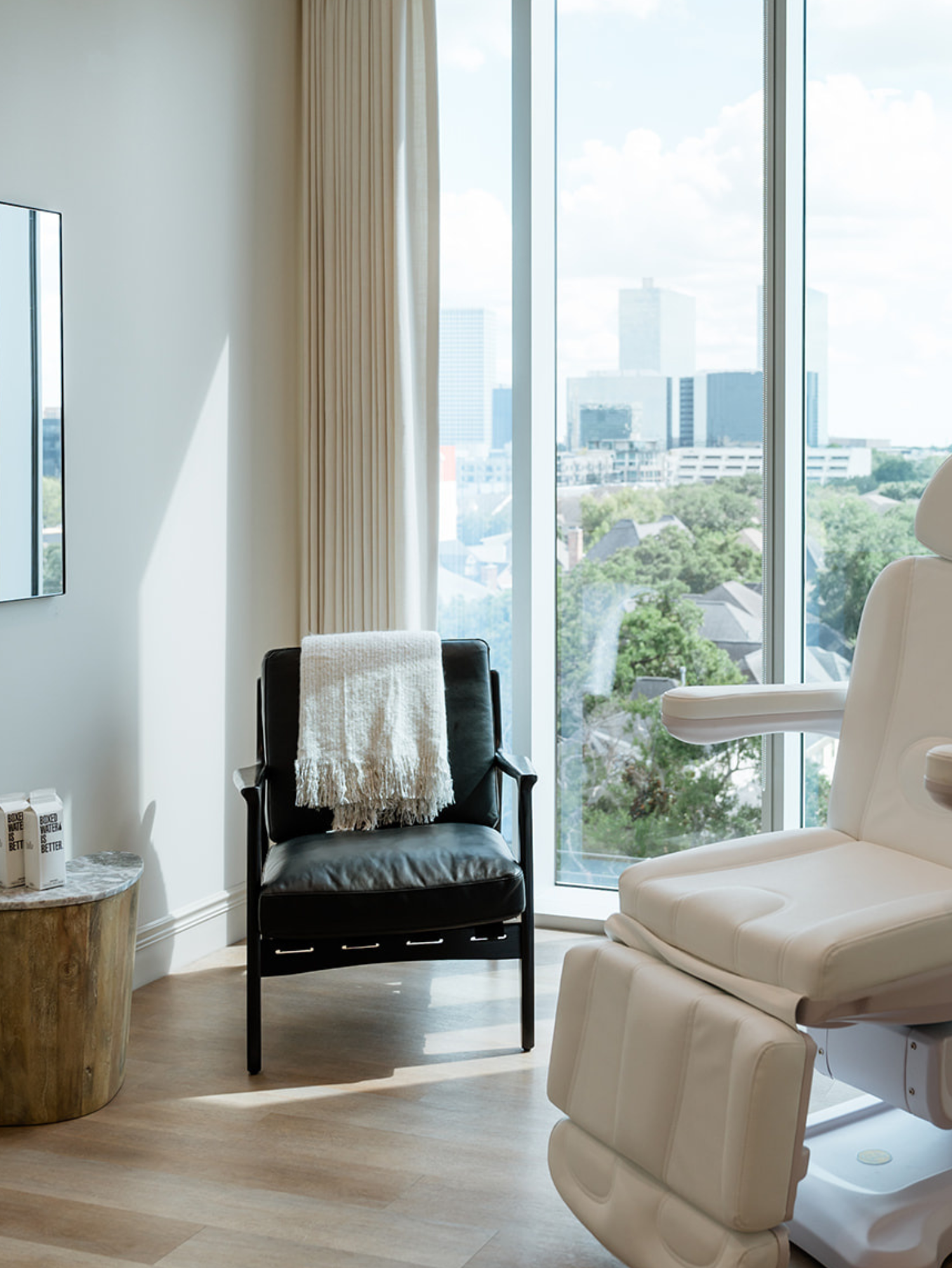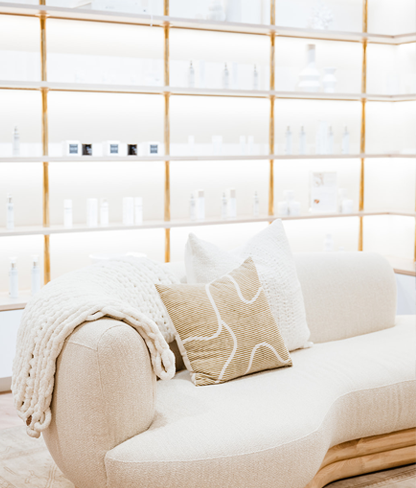Shop skin care
Clinics
VISIT OUR 9 CLINICS →
HOURS
Monday – Friday
9:30a – 5:30p
Everything You Need to Know about Glycolic Acid Toner Pads

You may have heard of glycolic acid, but have you ever used glycolic acid toner pads?
Designed by the skin care providers at Skin Pharm, these simple but effective products are excellent for putting all of the benefits of glycolic acid into one easy-to-use package.
Glycolic acid toner pads will get your skin glowing in no time, and we’ll tell you exactly why and how to use them for the best results.
Glycolic acid basics
Glycolic acid falls into the category of hydroxy acids known as alpha-hydroxy acids. You may be more familiar with them as AHAs. This classification of ingredients is best known as exfoliators, meaning they remove dead skin cells from the skin.
Other AHAs include citric acid, lactic acid and malic acid.
Just like the other AHAs, glycolic acid is an ingredient that can also be found in nature. In this case, it is naturally present in sugarcane, although the vast majority of the glycolic acid that you find in skin care products is made in a lab. It comes in a wide range of different concentrations, with the lower percentages (between eight to 30%) found in over-the-counter products, like glycolic acid toner, and the higher ones (up to 70%) only able to be applied in a medical office.
If you’ve ever gotten or considered getting a chemical peel, it’s likely that you’ve already had a higher-powered glycolic acid on your skin before.
However, of all of the available AHAs that are used in skin care, glycolic acid has the smallest molecules. That allows it to penetrate further down into the pores than other products can.
Once there, it gets to work breaking down the bonds between the dead skin cells, which allows them to be easily swept off the face during the normal cleaning process. When they’re not held together as closely, they can be cleared off the face, which then reminds the skin that it needs to keep making new skin cells, too.
What benefits does glycolic acid offer?
Glycolic acid’s status as an exfoliant can provide you with a variety of different benefits. Most of these benefits are quickly visible on the skin’, which is where it will be directly applied.
One of those benefits is the way that glycolic acid can brighten the skin. This evening out and brightening of the skin is what gives it the reputation for making the skin “glow.”
Essentially, this is because glycolic acid toner increases the speed of the skin’s cell turnover rate. Instead of having the skin’s surface covered with dead skin cells, which make your skin look dull and tired, it opens the pathway for new skin cells.
As we age, our skin requires more attention, which is why our skin looks far more dewy and glowing in our 20s than it does in our 50s.
An excellent glycolic acid toner can also help reduce the visibility of fine lines and wrinkles. When it reaches the skin, it also triggers the production of additional collagen.
This plumps up the skin and boosts hyaluronic acid production, allowing it to stay looking youthful and firm for as long as possible.
Glycolic acid is also touted for its usefulness with acne-related concerns. Because its small molecules can penetrate deep into the pores, it also naturally helps keep them clearer.
Glycolic acid can also dissolve any sebum or debris inside the pore, much like it dissolves the bonds between dead skin cells. Not only does this all help to reduce the risk of developing breakouts, but it can allow the remainder of your skin care products to penetrate even further into the skin.
One last benefit of glycolic acid is its ability to begin to fade hyperpigmentation over time. That means that people of all skin tones can feel safe using this impressive alpha-hydroxy acid.
Why glycolic acid toner pads are a great choice
There are so many products out there that boast glycolic acid as a primary, active ingredient, but not all are created equal.
In our opinion, glycolic acid is at its most effective (at least, in the at-home environment) when it is included in a toner. The action of toner and its place in any skin care routine allows it to work directly on any remaining dead skin cells. You can also help to physically remove them from the skin using a cotton pad while applying the toner.
That’s why we’re partial to Skin Pharm's Crystal Clear clarifying pads. They contain everything you need to use glycolic acid successfully, all in one convenient place. They also work similarly to a serum, depositing active ingredients on the skin, including glycolic acid, lactic acid and salicylic acid. This results in brighter skin with less visible pores and a lower risk of breakouts.
When using glycolic acid toner pads, they’ll fall after your cleanser but before your serums and moisturizer in your skin care routine.
As we briefly touched on earlier, glycolic acid is also effective as a primer that helps open up your pores so that it can accept more of your other products, as well as allowing them to penetrate more deeply into the skin.
Plus, the smooth surface that is left behind also makes your skin a beautiful, blank slate for makeup application, if that’s your thing.
How often should I use glycolic acid toner pads?
When it comes to glycolic acid, you don’t want to use it too often. Not only will your face adjust to it, making it less effective, but it can also make your skin sensitive and irritated.
We recommend using our glycolic acid toner pads once a week, at first, after thoroughly cleansing the skin. After that, you can either increase or decrease the frequency depending on how your skin seems to be adjusting.
Some people can use it daily, but pay attention to how your skin is reacting. If you have extra sensitive skin, hold off on using your glycolic acid toner pads and give your skin a chance to heal.
Are there side effects associated with glycolic acid?
Because of its exfoliation abilities, there are certain side effects that you may see when you first start to incorporate it into your routine. Most of these can be negated by starting slow and not overusing them.
However, if you have naturally sensitive skin, you should expect to see at least some of these. If you’re noticing that it stings or burns when you put it on your face, it’s a sign that it might not be the right product for your skin and you should discontinue use.
Symptoms like redness, flaking, peeling, dryness and irritation can be counteracted by using a quality moisturizer to end your routine at night. Also, don’t forget to use a water-resistant, broad spectrum sunscreen with at least SPF 30 before you leave the house in the morning.
Proper hydration and protection can go a long way toward helping your skin look its best, whether you are using glycolic acid or not.
In addition, it is generally not recommended for people with rosacea, eczema, or psoriasis to use a glycolic acid toner. Even with a lower percentage of glycolic acid, it is likely to be too strong for the skin.
Can I use glycolic acid with retinol?
Using glycolic acid toner and retinol together isn’t recommended, but the good news is that there are ways to get around that.
While you should never use glycolic acid and retinol at the same time, alternating them every other day can still allow you to get the benefits of both without as much of a risk of the side effects associated with either.
However, just like with either of these skin care ingredients separately, make sure to start slow and don’t speed up the process before your skin is ready.
To sum it all up...
Using glycolic acid toner in the right way, at the right place in your skin care routine, has the potential to reveal brighter, clearer, more youthful-looking skin.
At Skin Pharm, we designed products meant to be easy to use while also making a difference. When you develop a supportive skin care routine that works with your skin and keeps your personal goals in mind, you’ll wonder why it took you so long to do it!
SOURCES:
Hydroxy Acids - an overview | ScienceDirect Topics
